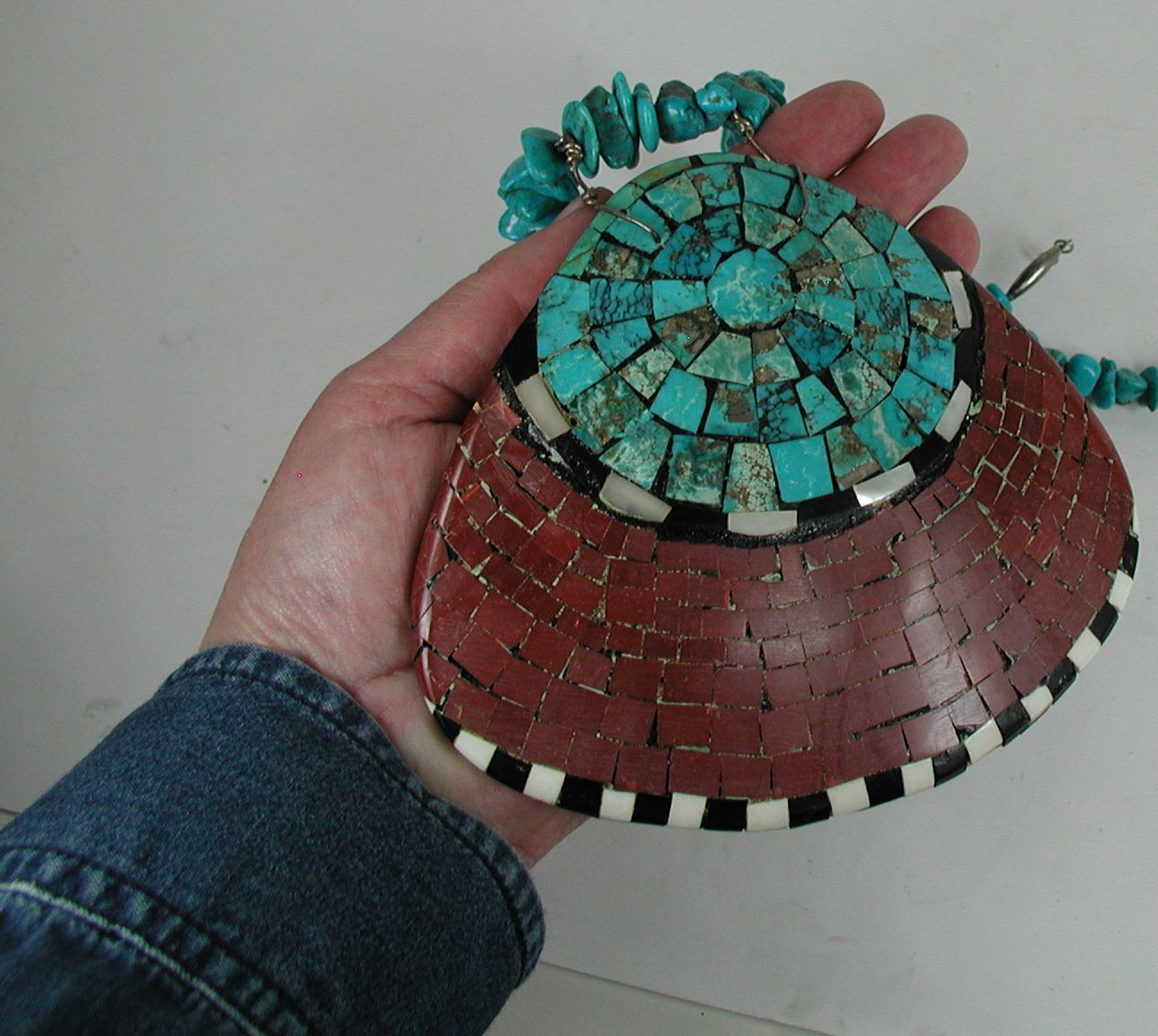Almost every day I wear one or two sterling silver Native American rings. Some are made solely of sterling silver. Others are inlaid with a variety of stones and shells or adorned with turquoise and other precious stones. For me, its important to pick the right ring for what I have lined up for the day or night.
Although the rings in these photos are my personal rings and not for sale, if you click on the photos, they will take you to pages of similar rings that are for sale at the Horsekeeping webstore.
First of all, because I support Native American artists both contemporary and past, I try to only wear rings that are Native American made by enrolled members of Indian tribes in the United States. The rings I wear are either Navajo, Hopi, Zuni or Lakota made.

Sometimes with vintage rings it is hard to tell who made the ring because it was not common to sign or stamp a hallmark on Native American jewelry until relatively recently.

RANCH WORK
One factor that affects which ring I will wear is that I live on a ranch. When I am going to be outdoors or working in the barn near metal panels, banging gates, handling ropes, reins and such, I opt for simple rings such as a well-fitting silver band.

When wearing a simple silver band, there is very little that could get caught and rip my finger off. Plus, by not wearing my stone or inlay rings around the barn, I run a much smaller risk of cracking the stones.
Sterling rings are safe to leave on when I wash my hands, something I do quite a bit up at the barn. So here are some of the ranch rings I wear. As you view these photos, remember that coffee is one of the essential fuels on a horse ranch.

OFFICE WORK
When I am at work at Horsekeeping, the Native American Jewelry webstore, it basically involves sitting at a desk typing, taking photos of jewelry, pulling items to fill orders and the like. My office ring options are much broader.
Still, though I usually wear moderate rings to work, I don’t wear rings that are too huge or have prominent features. Since many of my “work day” rings have stones, inlay, petit point or needle point, I made sure to remove rings before I wash my hands because getting stone rings wet can do a couple of things, all bad.
First of all, with repeated wetting and drying, the adhesive behind inlay rings can become softened and eventually let go of the stonework.
I’ll never forget the customer who said “After I washed my hands in a rest area just like usual, I watched my turquoise inlay slide down the drain.” No comment.

With stone settings, since most are backed with sawdust or another shock absorbing material, getting them wet will cause that material to swell and push the stone upward, putting pressure on the bezels which often let go of the stone.
Again, a customer, “After I took a shower, the stone just popped out.” Ah hah.
COCKTAIL RINGS
The final category is date rings AKA cocktail rings. For that special night out when all you have to do is lift a fork or a glass.
Cocktail rings are those unique creations that are saved for special occasions when you are just plain showing off. Often large and worn on an index or middle finger, these rings look great whether you are picking up a cup of tea or a glass of whisky. The big bad boys just call out for your date and others in the area to check out your hands and your fabulous Native American made ring.


Choose an authentic Native American made ring and you’ll always have a winning hand.
Paula


















































































